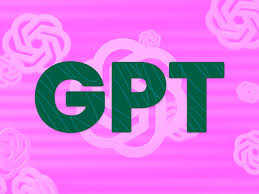Testing and evaluating GPT chatbot performance is an important aspect of deploying and maintaining chatbots. Here are some key considerations for testing and evaluating GPT chatbot performance:
- Functional testing: Conduct functional testing to ensure that the chatbot behaves correctly and handles various user inputs and scenarios as expected. Test different conversation flows, edge cases, and error conditions to verify that the chatbot generates appropriate responses and handles errors gracefully.
- Performance testing: Assess the performance of the chatbot by simulating high loads and measuring response times. Test the chatbot’s scalability and how it handles concurrent users. Performance testing helps identify potential bottlenecks and optimize the chatbot’s infrastructure and resource allocation.
- User experience testing: Evaluate the chatbot’s user experience by involving real users or testers. Collect feedback on the clarity, effectiveness, and usefulness of the chatbot’s responses. Use surveys, interviews, or user behavior analytics to gain insights into user satisfaction and identify areas for improvement.
- NLP model evaluation: Evaluate the quality of the underlying NLP model used by the chatbot. Assess its accuracy, language understanding capabilities, and response generation quality. Use existing evaluation metrics for language models such as perplexity, BLEU score, or human evaluation.
- Error analysis: Perform error analysis to understand the types of errors or shortcomings the chatbot exhibits. Analyze cases where the chatbot fails to provide accurate or relevant responses. This analysis can help identify patterns, improve training data, or address specific weaknesses in the chatbot’s performance.
- Continuous integration and testing: Implement a continuous integration and testing pipeline to automate testing processes. This ensures that new updates or changes to the chatbot’s codebase are thoroughly tested before deployment. Automated tests can include unit tests, integration tests, and end-to-end tests to cover different aspects of the chatbot’s functionality.
- A/B testing: Conduct A/B testing to compare different versions or variations of the chatbot’s behavior. Test different response generation strategies, dialogue management approaches, or conversation flows with a subset of users to measure the impact on user satisfaction and engagement. A/B testing helps in iterative improvement and optimization of the chatbot’s performance.
- Error handling and recovery testing: Test the chatbot’s error handling and recovery mechanisms by intentionally providing incorrect or ambiguous inputs. Verify that the chatbot can handle errors gracefully, provide helpful error messages, and recover from unexpected situations without breaking the conversation flow.
- Security testing: Assess the chatbot’s security measures and vulnerabilities. Perform security testing to identify potential risks such as injection attacks, data leakage, or unauthorized access. Implement security best practices and adhere to security standards to protect user data and ensure a secure chatbot environment.
- Regular maintenance and updates: Continuously monitor the chatbot’s performance in a live environment and address issues promptly. Regularly update the chatbot’s underlying models, dependencies, and infrastructure to ensure compatibility, security, and performance improvements. Stay updated with the latest advancements in NLP and chatbot technologies to maintain a competitive edge.
Testing and evaluating the performance of GPT chatbots is crucial to ensure their effectiveness and accuracy. Here are some considerations for testing and evaluating GPT chatbot performance:
- Test Data Preparation: Prepare a diverse set of test data that covers a wide range of possible user queries and scenarios. Include both common and edge cases to evaluate the chatbot’s ability to handle different types of inputs.
- Test Plan Creation: Develop a comprehensive test plan that outlines the specific tests to be conducted. This plan should include test cases that cover different aspects of the chatbot’s functionality, such as understanding user queries, providing accurate responses, handling complex or ambiguous input, and maintaining context in multi-turn conversations.
- Manual Testing: Start with manual testing by interacting with the chatbot yourself and simulating user scenarios. Evaluate its responses for accuracy, relevancy, and naturalness. Identify any errors, inaccuracies, or areas for improvement.
- Automated Testing: Implement automated tests using testing frameworks or libraries. These tests can simulate user inputs, compare the chatbot’s responses against expected outcomes, and identify any discrepancies. Automated testing can help streamline the testing process and ensure consistency across tests.
- Performance Testing: Assess the chatbot’s performance under different conditions to measure its responsiveness and scalability. Test its ability to handle multiple concurrent users, peak loads, and large volumes of data. Monitor response times and resource utilization to identify potential bottlenecks and areas for optimization.
- User Acceptance Testing (UAT): Involve real users or a representative sample of users in UAT. Collect feedback and evaluate their overall experience with the chatbot. Use this feedback to identify areas of improvement and address any usability issues.
- Evaluation Metrics: Define appropriate evaluation metrics to quantify the chatbot’s performance. Metrics can include accuracy, precision, recall, response time, user satisfaction ratings, and completion rates. Regularly measure and track these metrics to assess the chatbot’s performance over time and identify areas for enhancement.
- Continuous Improvement: Continuously update and improve the chatbot’s training data and model based on user feedback and testing results. Regularly iterate on the chatbot to incorporate new user inputs, refine responses, and address identified issues.
- User Feedback and Monitoring: Implement mechanisms to collect user feedback during real-world usage. Provide avenues for users to report issues, give suggestions, or express their satisfaction. Monitor chatbot performance in production to identify any potential issues or system failures.
- Regular Maintenance and Updates: Deploy regular maintenance and updates to keep the chatbot up to date with the latest information, technology, and user requirements. Monitor performance and metrics post-deployment to ensure the chatbot continues to meet user expectations.
By implementing a comprehensive testing and evaluation strategy, you can ensure that the GPT chatbot performs optimally, meets user expectations, and provides a satisfactory user experience. Regular testing and evaluation help identify and address issues proactively, leading to continuous improvement and maintenance of the chatbot.
SHARE
